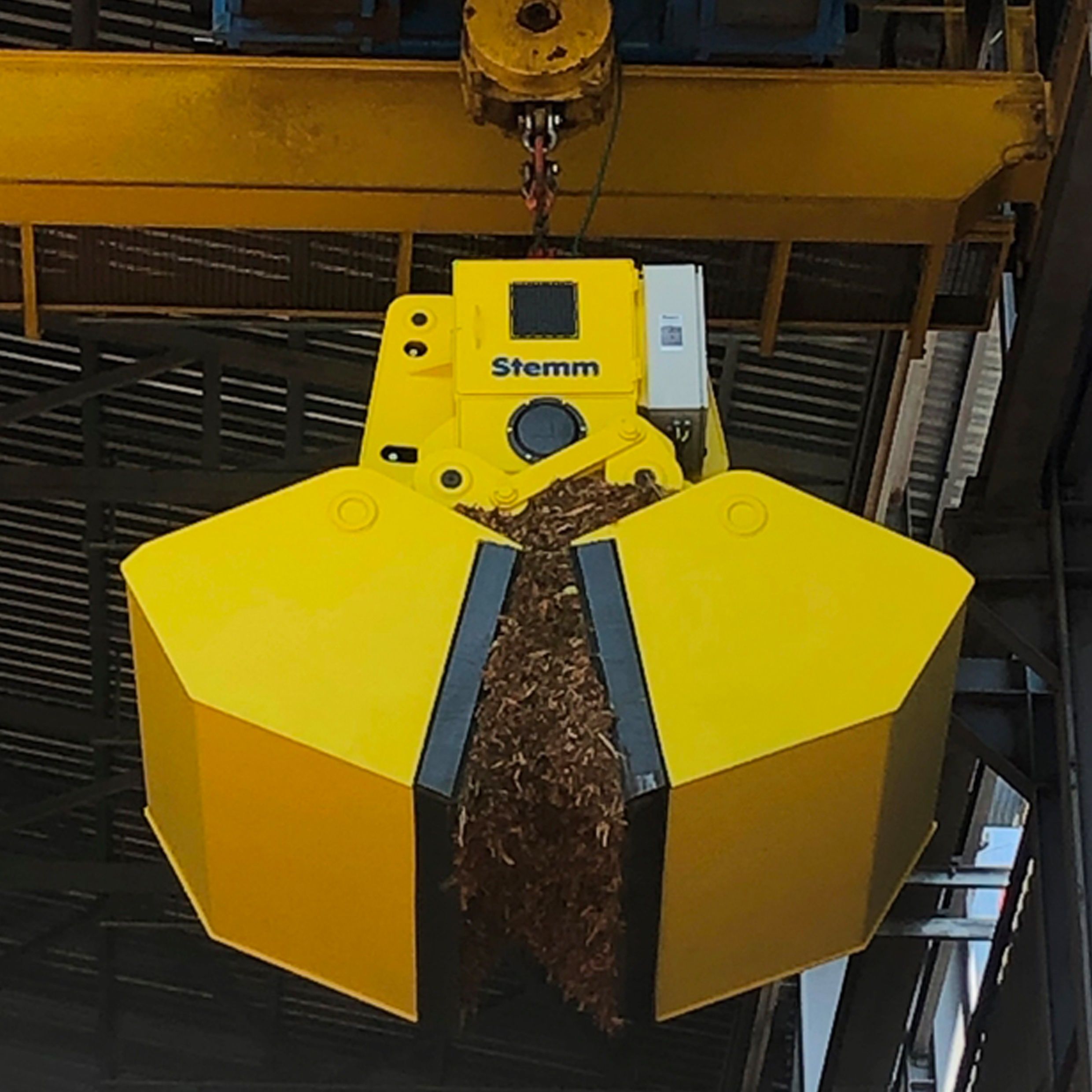Orange peel grabs and clamshell grabs in European biogas processes
Biogas production processes in Europe are evolving rapidly thanks to the incorporation of advanced technologies and specialised equipment. It is an emerging industry with a very active present and a promising future, as biogas is the only 100% renewable energy that can be used for any significant energy application and reduce greenhouse gas emissions. Biomass or green gas (biogas) is mainly obtained from livestock, agro-industrial waste, and sludge from wastewater treatment plants (WWTP).
The nature of the environments in which the materials needed to produce biogas are collected requires machinery and tools that do not compromise either the environment or the workers but, at the same time, are efficient. Stemm's grabs play a decisive role among the valid options for this purpose. Equipped with specific and advanced features, these devices improve efficiency and ensure biogas plants' sustainability and reliability.
Evolution of Biogas Plants in Europe
Biogas production has become a decisive solution for generating renewable energy in Europe. So much so that various European projects are now dedicated to supplying this type of energy. As a prominent example, the Wittersheim biogas plant processes up to 4.2 tons of corn straw annually in France. This plant is primarily fed by manure from cattle, poultry, horses, goats, and intermediate crops. The efficient mix of these substrates allows for profitable production, which, as an additional positive point, is unaffected by market fluctuations.
In Denmark, projects led by Wärtsilä and Nature Energy are advancing in biogas production. In the southern cities of Kvaers and Kong, biogas plants have been installed to provide up to 470 GWh of green gas energy, enough to power over 45,000 cars.
Focusing on Spain, although the development of biogas has been more gradual, 146 facilities are producing 2.74 TWh of energy. These facilities are mainly associated with landfills, wastewater treatment plants, and the agricultural sector. The Biogas Roadmap of the Ministry for Ecological Transition and the Demographic Challenge (MITECO) aims to multiply sustainable production of this gas by 3.8 times by 2030, thus promoting the circular economy and rural population stabilization.
All these examples indicate that biogas generation will grow considerably over the coming years, necessitating suitable and efficient machinery capable of handling tasks such as collecting livestock, agro-industrial waste, and sludge from wastewater treatment plants, the primary source of biogas.
Stemm orange peel grabs and clamshell grabs for handling organic waste
Within the circular economy framework, biogas allows for valorising organic waste, converting it into biofertilizers and closing the material cycle sustainably. This approach reduces dependence on fossil resources and promotes more sustainable agricultural and waste management practices. With the same goal, Stemm orange peel grabs and clamshell grabs are specifically designed to improve the efficiency and sustainability of biogas plants. Their innovative features include automated systems, high-strength materials, and other characteristics such as:
- Speed in opening and closing: Thanks to high-pressure, low-noise pumps, Stemm grabs adjust automatically based on the density, moisture level, granulometry, and condition of the bulk product.
- Reinforced and anti-torsion design: This is essential for handling heavy and bulky materials. The tips of the claws are reinforced with wear—and abrasion-resistant materials, extending the equipment's life and enhancing its performance under demanding conditions.
- Quality control and maintenance: The quality control of Stemm grabs is highly rigorous. Each grab is tested through 500 maneuvers before shipment, ensuring its reliability and durability. Additionally, pressure readings are facilitated by three quick control points and a Bluetooth application that allows for remote readings, improving maintenance efficiency.
- Efficiency and sustainability: Stemm grabs are designed to maximize the penetration and compaction of the handled material. The claws’ penetration force is consistent and progressive, ensuring efficient and precise material handling, which is crucial for the optimal operation of biogas plants.
Moreover, their innovative design and capacity to handle large volumes of heavy material are essential for the effective operation of biogas plants. With rigorous quality control and features that enhance operation and maintenance, Stemm grabs are a critical component in the transition towards cleaner and more sustainable energy in Europe.



